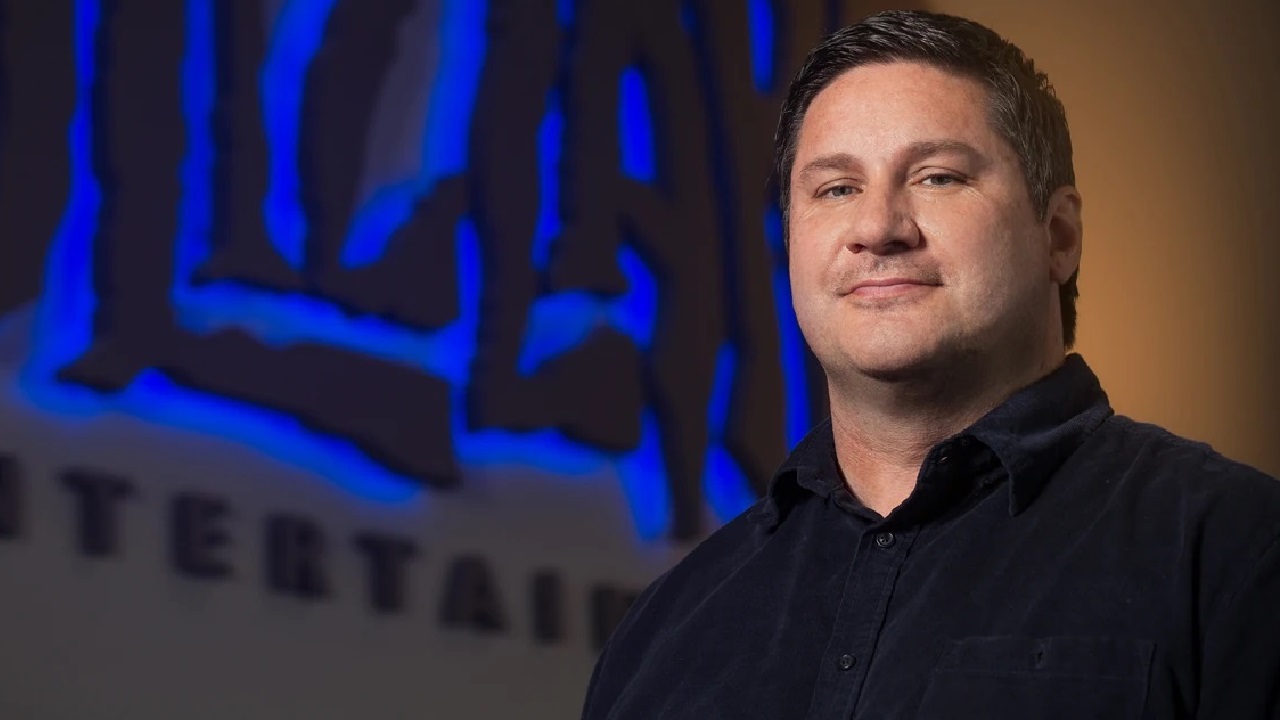(Image credit: LG | Alienware)
1. The list in brief
2. Best overall
3. Best 1440p
4. Best ultrawide
5. Best big-screen 4K
6. Also tested
7. How we tested
8. Find the deals
9. FAQ
10. Jargon buster
It’s been a long time coming, but OLED gaming monitors have now hit critical mass. When choosing the best OLED gaming monitor there are now multiple models to choose from in several sizes and categories. What they all share are certain advantages over conventional LCD technologies. For starters, OLED gaming monitors are crazy fast. Quoted response times for monitors can be misleading, but OLED gaming monitors genuinely deliver pixel response measured in fractions of a millisecond. They’re an order of magnitude faster than any LCD monitor and that really makes a difference for gaming.
Then there’s lighting control. OLED panels control lighting on a full per-pixel basis. There’s no backlight, not clunky dimming zones, just perfect, essentially infinite contrast. Again, no backlit LCD panel can compete with that perfect control.
Of course, OLED technology isn’t perfect. Aside from being painfully pricey, OLED technology comes with several drawbacks. The first is the risk of burn in or image retention. All of the latest OLED gaming monitors employ various mitigations to prevent burn in. And thus far, they seem to be holding up well. But OLED monitors as a technology category are new enough that the really long-term outlook is unknown.
The other obvious issue with OLED tech is limited full screen brightness. OLED panels can hit high peak brightness numbers over small areas or patches of the screen, achieving 1,000 nits or more. But lighting up the whole panel is more problematic. In particular, monitors based on LG-sourced WOLED panels struggle the most with full screen brightness, usually coming in under 200 nits, while those using Samsung’s QD-OLED tech perform better, typically notching up around 250 nits. For now, all gaming monitors are based on either LG or Samsung OLED panels.
One other area where even the best OLED gaming monitors can’t ultimately keep up with LCD tech is refresh rate. Currently, the fastest OLED panels top out at 240Hz, while LCD monitors running at over 500Hz can be had. In practice, 240Hz will be plenty for most PC gamers, but if you want the absolute ultimate in low-latency gaming, LCD retains a clear edge.
The Quick List
Best overall
The best overall
The combination of Samsung’s brighter QD-OLED tech with a glossy panel coating at a relatively low price makes this the OLED gaming monitor of choice. Ridiculous pixel speed, outrageous contrast and eye-popping colours, all in a perfectly proportioned 34-inch ultrawide package.
Best 1440p
The best 1440p
If 27-inch 1440p remains the resolution and form factor of choice for many gamers, this LG OLED lifts that category to new heights in terms of response and per-pixel lighting control. The only real downside is limited full-screen brightness. Oh and the painful price.
Best Ultrawide
The best ultrawide
Samsung’s new 49-inch curved monster delivers a stupendous gaming experience thanks to QD-OLED panel tech on such a massive scale. That said, the extreme 32:9 aspect ratio isn’t a great fit for all gaming genres. And it’s awfully expensive.
Best big-screen 4K
The best big-screen 4K
The classic 27-inch Dell S2722DGM marries that screen real estate with a 2560 x 1440 native resolution, which gives you a great pixel pitch for fine detail. At 1440p it’s also a decent resolution for getting high frame rates without the GPU demands of a 4K display.
Best OLED monitor overall
(Image credit: Future)
(Image credit: Future)
(Image credit: Future)
(Image credit: Future)
(Image credit: Future)
(Image credit: Future)
(Image credit: Future)
It’s a simple, low-tech tweak. But it makes all the difference. Alienware has a second 34-inch ultrawide OLED gaming monitor out in the Alienware 34 AW3423DWF and, hallelujah, it has a glossy anti-glare coating in place of the OG model’s matte coating.
When Alienware wheeled out what was the world’s first OLED gaming monitor, the Alienware 34 AW3423DW, it went straight to the top of the table. It was simply stunning.
But it wasn’t, you know, actually perfect. The new Alienware 34 AW3423DWF adds an “F” on the end and loses a few on-paper features in the quest for a lower price point. For starters, the mostly pointless Nvidia G-Sync Ultimate certification and the costly G-Sync chip it requires have been ditched.
In its place you get AMD’s Freesync Premium Pro and therefore perfectly adequate adaptive refresh support. Speaking of refresh rates, this new F model steps down from 175Hz to 165Hz. You’re never going to feel that difference in-game, so it’s a minor spec tweak designed more for product differentiation than a real-world distinction.
Those details aside, you’re mostly getting the same 34-inch ultrawide and slightly curved proposition as before. The Samsung QD-OLED panel is carried over, which is a very good thing. Not only do you get the silly-fast pixel response that’s characteristic of modern OLED tech. Samsung’s take on OLED delivers much more consistent brightness performance than LG’s competing OLED panels.
The glossy coating really lets the OLED panel sing.
So, you don’t have to deal with distractions like the whole screen dimming dramatically in response to rendering a large bright object, when, say, you open your web browser over a dark desktop wallpaper and the automatic brightness limiter (ABL) kicks in. Yuck. This monitor always looks punchy, which you absolutely cannot say of monitors with LG OLED tech.
In fact, it’s better than that because the glossy coating really lets the OLED panel sing. In that regard, it’s just like the Philips Evnia 34M2C8600, which is another member of the Samsung QD-OLED gang and also has a glossy anti-glare coating. It does wonders for black levels and contrast.
There are LCD monitors with mini-LED backlights that will go brighter, of course, especially full-screen or near-full-screen. But they lack the per-pixel lighting precision of OLED. Oh, and the speed. Lordy, this thing is quick, there’s simply no motion blur, not from the pixels. Of course, at 165Hz there are faster displays in refresh terms. But for most gamers most of the time, 165Hz is plenty.
This Alienware is also cheaper than the Philips Evnia and compared to that monitor is only missing a USB Type-C connection, which in a gaming context isn’t a huge loss. As for reservations, well, once again it’s the same story as the OG Alienware OLED. For general computing the pixel density ain’t great. That doesn’t make for terribly crisp fonts in Windows or super sharp image detail. The triangular rather than vertically-striped RGB subpixel substructure doesn’t help with text clarity, either.
Then there’s the whole OLED burn-in thing. You get a three-year warranty with burn-in cover, so the simple answer is don’t buy if you can’t accept any burn-in after that time period, because you won’t be covered and it’s currently unclear how long this tech will last.
And of course, this remains a very expensive monitor, even at the relative discount. But you can still ink the new Alienware 34 AW3423DWF in as our new favourite gaming panel. Because it’s absolutely farking fabulous.
Read our full Alienware 34 AW3423DWF review.
Best 1440p OLED gaming monitor
(Image credit: Future – Jorge Jimenez)
(Image credit: Future – Jorge Jimenez)
(Image credit: Future – Jorge Jimenez)
(Image credit: Future – Jorge Jimenez)
(Image credit: Future – Jorge Jimenez)
Who doesn’t love a 1080p screen with a 500Hz refresh rate or a massive 4K display at 120Hz? But 1440p is arguably still where it’s at for multi-purpose PC gaming. Enter the LG UltraGear 27GR95QE-B, one of the first 1440p 240Hz OLED gaming monitors to hit the market.
This UltraGear offers a wildly fast 0.03ms response rate. It’s a gorgeous monitor that’s found the perfect blend of speed and performance with insane picture quality. The tricky bit? It’s $1,000. Yeah, that’s a lot of money for a 27-inch 1440p display, even one that runs at 240Hz. But that’s OLED tech for you.
Anyway, games look just incredible on this monitor. Playing some of the new DLC for Marvel’s Midnight Suns, the details on Blade and Iron Man’s futuristic armor sets and the swirl of stunning particles when a Hydra soldier gets smashed to smithereens are visual feasts. Likewise, the frozen realms filled with murderous elves in God of War have never looked better. As for Fortnite, after playing it 240Hz at 1440p with OLED response times, there’s no other way you’d want to do it.
As impressive as that all sounds, the LG can’t escape the common problem that plagues some OLED gaming monitors: brightness. In my testing, the OLED’s non-HDR peak brightness sits just above 200 nits which is pretty disappointing. LG claims you can get around 800 nits with HDR on, but will only apply to small, bright objects. So, it will be gaming-relevant, but you can’t expect anything close to the brightness you’d get from a screen that can actually do 800 nits full screen. Moreover, OLED monitors with Samusng QD-OLED panels are simply brighter.
The tricky bit? It’s $1,000.
Since it is an OLED display, you do run the risk of burn-in if static images stay on the screen over long periods. However, LG seems to have a handle on this. So much so that they’ve recently started talking smack about Samsung’s burn-in issues. Thankfully, LG uses many of the same techniques as it does on its OLED TVs to prevent burn-in, such as automatic pixel cleaning as you shut the monitor after a long session.
Design-wise not much has changed from previous UltraGear monitors, which isn’t bad. You can rotate it to portrait mode, and it’s got a pair of USB and HDMI ports. Console gamers will be happy to see that these are HDMI 2.1 ports so you can play games at 120Hz, which is always welcome. The cable management is neat, as are the skinny display bezels. There’s no speaker, but you have an optical part that you can plug into a soundbar.
So, the LG UltraGear 27GR95QE-B is a heck of a monitor and the right choice if you’re looking for speed and image quality for every type of game. While the brightness is a bummer, this is still one of the best looking and playing OLED gaming monitors out there.
Read our full LG Ultragear 27GR95QE-B review.
Best ultrawide OLED gaming monitor
(Image credit: Future)
(Image credit: Future)
(Image credit: Future)
(Image credit: Future)
(Image credit: Future)
Another day, another bleeding-edge, megabucks OLED monitor? Yep, but suck it up gaming freaks and behold the Samsung Odyssey OLED G9 G93SC, all 49 inches of it.
What we’re dealing with here is an OLED monitor using the same Samsung QD-OLED panel tech that we’ve seen previously on both Alienware’s 34-inch models, including the Alienware 34 AW3423DWF, and the Philips Evnia 34M2C8600. It’s just the panel is even wider at 32:9 aspect rather than 21:9. You get the same pixel density, the same 1,440 vertical pixels, but the horizontal resolution has been broadened out to 5,120 pixels.
Consequently, this new OLED panel is exactly the same size and resolution as Samsung’s previous Odyssey G9 monitors based on LCD rather than OLED panels.So, the form factor is familiar, albeit the 1800R curve is less extreme than the 1000R of previous G9 panels. But for image quality, this OLED take on the ultrawide thing totally blows those older G9 panels away.
For refresh, you get 240Hz and the response time is rated at 0.03ms, just like other QD-OLED monitors. Full screen brightness is rated 250 nits, which again is identical to every other QD-OLED-based monitor we’ve seen. Slightly frustratingly, Samsung doesn’t quote maximum HDR brightness, although the panel is DisplayHDR True Black 400.
This is the experience that the hype around HDR has long promised but hitherto failed to deliver.
For connectivity, you get DisplayPort, HDMI and mini HDMI, plus a USB hub with USB-C a USB-C interface. Note that the USB-C socket is only for the hub, it isn’t a display interface and doesn’t have power delivery either, which is a pity and something you might expect to have been thrown in on this class and price of monitor.
On the build and engineering side of things, well, this monitor is simply gorgeous. It looks ultra modern and minimalist and feels very nicely put together. The OLED panel tech also means that the panel enclosure can be super thin.
Anyway, the main story here is what this monitor is like to game on and here the news is almost all very good indeed. Indeed, it looks exactly like Alienware 34 AW3423DWF and the Philips Evnia 34M2C8600, just on a larger scale. And, yes, that includes the glossy panel coating, which does wonders for contrast.
This thing looks at least pretty punchy all the time, which is not something you can say about OLED monitors with LG WOLED panels. Where LG panels dip pretty dramatically when you light up most or all of the panel, there’s almost no visible ABL or automatic brightness limiter nonsense to put up with on this Samsung monitor. And, if anything, it looks brighter than 250 nits full screen.
That’s a real boon for non-gaming applications. Suffering the brightness bouncing around on the desktop when you open and close browser windows on those LG OLED monitors is pretty distracting. But there’s none of that on this panel. Of course, to that you can add perfect per-pixel lighting control and a lot more than 250 nits brightness in HDR highlights.
Put simply, this is the experience that the hype around HDR has long promised but hitherto failed to deliver. Of course, with 240Hz refresh and 0.03ms response, this monitor is silly quick, too. So, yeah, this is a pretty exceptional gaming experience overall. If we do have doubts, well, they come down to the extreme 32:9 form factor and concerns over Samsung’s QD-OLED panel tech and burn-in.
Read our full Samsung Odyssey OLED G9 G93SC review.
Best big-screen 4K OLED gaming monitor
(Image credit: Future)
(Image credit: Future)
(Image credit: Future)
(Image credit: Future)
High speed OLED gaming monitors are finally legit. Among them, Asus has unleashed the ROG Swift PG42UQ OLED, a 41.5-inch behemoth. Leveraging the same panel from the LG C2 OLED TV, the Swift PG42UQ adds higher refresh rate, an anti-glare coating, DisplayPort 1.4 and more gaming monitor accoutrements. The result is one of the best 4K gaming monitors around.
The main question is whether it’s worth the full $1,399. At that price it’s more expensive than LG’s 42-inch C2, but it does a few things better for the premium. Firstly, it works like a proper monitor and not a smart TV and sports a full four-port USB hub. Take that C2!
It also comes with 138Hz refresh versus the C2’s 120Hz. It’s only a small improvement, but will be appreciated for anyone packing one of the best graphics cards out there right now. Throw in 0.1ms response time, as well as G-Sync compatibility, and Asus is onto a winner.
Of course, the Swift PG42UQ is an OLED, which almost immediately gives it an advantage over the competition in terms of color accuracy, contrast and response. 1,500,000:1 contrast ratio is no joke; it makes the 10-bit color pop and sizzle. While the matte display dulls things a bit compared to a glossy C2, it still looks amazing and works wonders for rejecting pesky reflections.
Throw in 0.1ms response time, as well as G-Sync compatibility, and Asus is onto a winner.
Out of the box, colors are already amazing, with rich saturation, vibrance and contrast. There are several color profiles to pick from the OSD including dedicated DCI and sRGB modes. Dive into the OSD and you can easily calibrate the monitor to your liking. SDR brightness peaks out about 450 nits and up to 750 nits in HDR in small windows, while full-screen brightness is sub 200 nits.
Hardly the brightest, but the perfect black levels help to offset that. So, HDR is absolutely stunning on the Swift PG42UQ. In dark, moody games like Resident Evil Village or A Plague Tale: Requiem, it’s hard not to be legitimately spooked in those dark corridors.
At 42 inches, it’s not the biggest panel ever but it’s plenty to completely fill your vision and pixel peep. The size does stretch the limits of pixel density, though. Text and icons aren’t terribly crisp or sharp.
The stand on the PG42UQ isn’t too dissimilar from a TV’s—it’s wide but not too deep, leaving plenty of room in front of the monitor. While it does give you 5 degree tilt, there’s no height or swivel adjustment. There are two HDMI 2.1 ports, two HDMI 2.0, and a DisplayPort 1.4. That’s alongside the USB upstream and four USB 3.2 Type-A downstream.
In terms of sound, the PG42UQ has some of the best speakers you’ll hear on a gaming monitor. It uses Harman-Kardon speakers that get really loud without distorting, with a 15W subwoofer that offers tasty bass.
Overall, the main drawback here is price. With LG’s C2 42 coming in $300 cheaper, and offering a lot of the same experience, it’s difficult to recommend the Swift for simply your average movie watcher. However, the standard C2 is not (and will never be) a gaming monitor. The Swift brings all the best parts of the C2 into the gaming space, improving it in a host of ways that gamers will be better pleased with.
Read our full Asus ROG Swift PG42UQ review.
PC Gamer OLED gaming monitor reviews
If Alienware’s very similar 34-inch model was the OLED monitor we’ve been waiting for, Philips has just bested it. Thanks to a glossy panel coating, the OLED tech really sings. HDR games? They positively sizzle. A few minor OLED limitations remain. But this is as good as gaming monitors currently get.
PC Gamer score: 95%
For
Glossy panel lets OLED tech singSuper speedy performanceFewer OLED downsides than the competition
Against
Very expensivePixel density is nothing specialSome brightness limitations remain
It’s been an incredibly long time coming. But OLED awesomeness has finally come to the PC. LCD technology still has the edge for latency, but this quantum dot-enhanced OLED screen is incredible when it comes to contrast, HDR performance, and response. Net result? Simply one of, if not the, best gaming monitors ever.
PC Gamer score: 95%
For
Fabulous contrast and coloursStupendous pixel responseGenuine HDR capability
Against
Not a great all-purpose panelLatency isn’t a strong pointNo HDMI 2.1
The BenQ Mobiuz EX480UZ is a solid choice if you want to adopt the large gaming monitor lifestyle. It’s got the speed, color, and contrast you want for PC and console gaming. However, its limited ergonomics and high price make it hard to fully recommend over some of its competitors.
PC Gamer score: 79%
For
Great color and contrastExcellent response timeGood speakers
Against
Very expensivePoor ergonomic designUnimpressive HDR
Corsair’s take on the 27-inch 1440p OLED is beautifully engineered and all the usual LG-powered OLED upsides appear, including warp-speed responses and lovely per-pixel lighting. But so does the inconsistent brightness. And that’s a little tricky to accept at this lofty price point.
PC Gamer score: 80%
For
Outrageous pixel responsePer-pixel OLED lightingNicely engineered
Against
Inconsistent brightnessVery expensive for a 27-inch panel
Waiting for the big-screen monitor that really delivers on the promise of OLED tech? This isn’t it. The Corsair Xeneon Flex 45WQHD240 suffers from all-too-apparent brightness limitations, while the resolution and pixel density are a very hard sell at this price point.
PC Gamer score: 68%
For
Ultra-fast response timePretty much perfect black levelsGood connectivity
Against
Disappointing full-screen brightnessFeels fragile when flexingRelatively low resolutionA 42-inch 4K OLED gaming TV is half the price
LG’s smallest OLED is uniquely feature-heavy and offers blistering framerates. For PC gamers looking for a 4K TV, this is the best choice.
PC Gamer score: 89%
For
Unrivalled blacksOffers up 4K@120HzA (semi) desk-friendly form factor
Against
Expensive for a sub 50-inch TVRisk of screen burn-inNo full-range colour gamut at 4K yet
Best computer speakers | Best gaming headset | Best gaming laptop | Best wireless gaming headset | Best PC controller | Best capture card
How we test gaming monitors
(Image credit: Future)
How does PC Gamer test gaming monitors?
Like everything else we test, we live with a gaming monitor in the same way you would at home. We make sure to use it for day-to-day monitor-y tasks on your windows desktop—because your PC likely isn’t just for gaming—and we, of course test it while gaming.
The Windows desktop will highlight any failings in factory calibration, and show up any issues with font scaling, too. Fonts can be a particular problem with OLED panels thanks to typically not using standard RGB subpixels. The Windows desktop is also a good way to test problems with OLED full-screen brightness and auto brightness limiting (ABL) functions.
As for gaming, using fast-paced shooters is a great way to test out the response of a given gaming monitor, and then the neon-dripping world of Cyberpunk 2077 makes for an excellent HDR tester.
We also go through a series of experiential tests to highlight any response and latency issues. We find it too easy to get lost in the weeds of specific panel benchmarks and miss more obvious problems that might crop up during day-to-day gaming use. So, we put more weight on what it’s like to actually use a gaming monitor than what the specs might say.
Where to buy a gaming monitor
Where are best gaming monitor deals?
In the US:
Amazon – Money off high refresh rate gaming monitors
Walmart – Save on quick gaming monitors
B&H Photo – Gaming monitors for as little as $110
Best Buy – Often Samsung gaming monitors going for less
Target – LG and Asus gaming monitors on sale
Staples – Regular sales on selected HP gaming monitors
Newegg – Lots of cheap gaming monitors to choose from
Dell – Money off Alienware gaming monitors
In the UK:
Amazon – Save on big-name monitor brands
Overclockers – 1440p LG gaming monitors from £190
Scan – AMD FreeSync monitors from as low as £100
CCL – deals on the best screens around
Box – discounts and refurbished monitors abound
Best OLED gaming monitor FAQ
What’s better for gaming, LCD or OLED?
First, let’s clarify one thing. Mini-LED monitors are LCD monitors with mini-LED backlights. So, they don’t compare to OLED with it comes to per-pixel lighting control and speed. OLED technology is massively faster in terms of pixel response and, currently, the only option for true per-pixel lighting and that means proper HDR performance, with sizzling, pin-point highlights combined with perfect, inky black levels.
That said, LCD still has the edge for latency thanks to offering refresh rates up to and beyond 500Hz, while OLED currently tops out at 240Hz. However, super-high refresh rates really only deliver a benefit in an ultra-competitive online shooter context. For everything else, OLED’s refresh rate is more than enough.
LCD’s final advantage is pixel density. 4K 32-inch OLED monitors are imminent, but right now OLED monitors offer relatively low pixel density. For gaming, that’s probably fine. But for general purpose computing, for things like crisp fonts and lots of desktop space, existing OLED monitors are a little compromised. But overall, OLED clearly gives the better gaming experience.
What’s the LG versus Samsung OLED panel tech thing about?
Currently, all OLED gaming monitors are based on either LG or Samsung panels. They both share basic OLED attributes including incredible speed and per-pixel lighting. But they also differ in a few important aspects.
First is subpixel structure. LG’s WOLED panels have white, red, green and blue vertical subpixels in that order. Samsung’s subpixels are arranged in a triangle, with the red and blue subpixels above the green subpixel and no white subpixel. For gaming, subpixel structure arguably doesn’t matter. But it does in Windows, especially for rendering fonts.
Next up, Samsung’s QD-OLED panels tend to offer better full-screen brightness, typically hitting about 250 nits. LG panels tend to be nearer 150 nits. That’s a very noticeable difference.
Is burn-in really a problem?
One other possible difference when it comes to LG versus Samsung panels is burn-in or image retention. Some early testing has suggested that Samsung’s QD-OLED panels may be more prone to burn-in than LG panels. But that has yet to be conclusively established.
More to the point, OLED technology is new enough in PC monitors that the true long-term durability has yet to be determined. All of the OLED monitors we have reviewed come with at least three years warranty, including burn-in cover. So, you needn’t have any immediate concerns. What’s harder to say is if you can reasonably expect an OLED monitor to resist any kind of burn-in for five years or more.
What aspect ratio should I go for?
Most games are optimised for a widescreen format at a 16:9 aspect ratio. That applies to TV content and video content, though feature films tend to be wider still. So, that’s 1080p, 1440p and 4K. All three are 16:9 aspect.
21:9 aspect ultra-wide panels are also popular, just bear in mind that most first-person shooters tend to just stretch the existing image over the wider aspect rather than extending the field of view (FoV). That’s especially true of competitive online shooters, where a wider FoV would make for an unfair advantage.
And the very far-out option, if you have a little extra cash to blow, is the extra-ultra-wide aspect ratio of 32:9. That can make for incredibly immersive gaming. But it also stretches the limits of ergonomics, both physical and in terms of things like game UI and menus. For most gamers, most of the time 16:9 and 21:9 are the best choices.
Jargon buster – gaming monitor terminology
Refresh Rate (Hz)
The speed at which the screen refreshes. For example, 144Hz means the display refreshes 144 times a second. The higher the number, the smoother the screen will appear when you play games.
V-Sync
Graphics tech synchronizes a game’s framerate with your monitor’s refresh rate to help prevent screen tearing by syncing your GPU frame rate to the display’s maximum refresh rate. Turn V-Sync on in your games for a smoother experience, but you’ll lose information, so turn it off for fast-paced shooters (and live with the tearing). Useful if you have an older model display that can’t keep up with a new GPU.
G-Sync
Nvidia’s frame synching tech that works with Nvidia GPUs. It basically allows the monitor to sync up with the GPU. It does by showing a new frame as soon as the GPU has one ready.
FreeSync
AMD’s take on frame synching uses a similar technique as G-Sync, with the biggest difference being that it uses DisplayPort’s Adaptive-Sync technology which doesn’t cost monitor manufacturers anything.
Ghosting
When movement on your display leaves behind a trail of pixels when watching a movie or playing a game, this is often a result of a monitor having slow response times. Happily, this doesn’t really apply to OLED monitors thanks to their incredible speed.
Response Time
The amount of time it takes a pixel to transition to a new color and back. Often referenced as G2G or Grey-to-Grey. Slow response times can lead to ghosting. Pretty much all OLED monitors are sub 1ms response and super fast.
QD-OLED
This is Samsung’s OLED panel tech. It’s the brightest currently available, but there are some early signs that it may be prone to burn-in.
WOLED
LG’s OLED panels have a WRGB or white-red-green-blue subpixel structure, hence the name WOLED, indicating an additional white subpixel.
HDR
High Dynamic Range. HDR provides a wider color range than normal SDR panels and offers increased brightness. The result is more vivid colors, deeper blacks, and a brighter picture.
Peak Brightness
This refers to the maximum brightness of a monitor or television and is measured in nits. OLED panels have good peak brightness of 1000 nits or more, but it’s limited to a small area of the screen.
Full-screen brightness
This is an important metric because full-screen brightness on OLED panels is always much less than peak brightness. Samsung QD-OLED tech can hit about 250 nits full screen, but LG panels are nearer 150 nits.
Ultrawide
Shorthand for monitors with aspect wider aspect ratios like 32:9 or 21:9
Resolution
The number of pixels that make up a monitor’s display, measured by height and width. For example: 1920 x 1080 (aka 1080p), 2560 x 1440 (2K), and 3840 x 2160 (4K).











